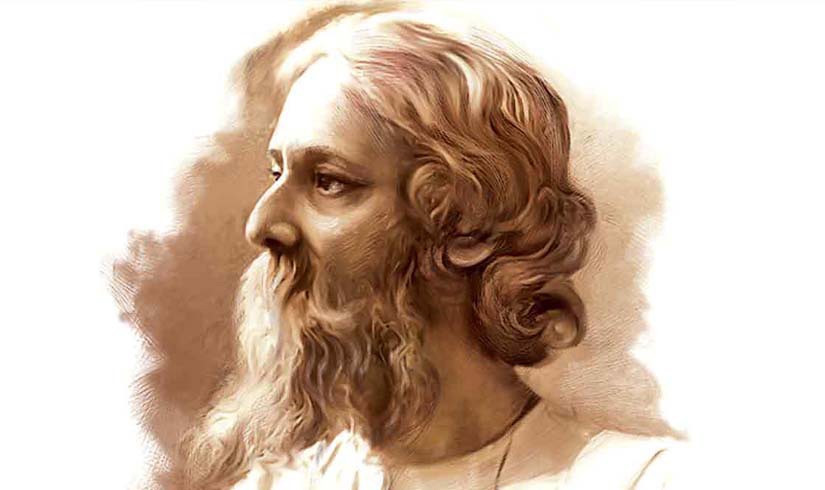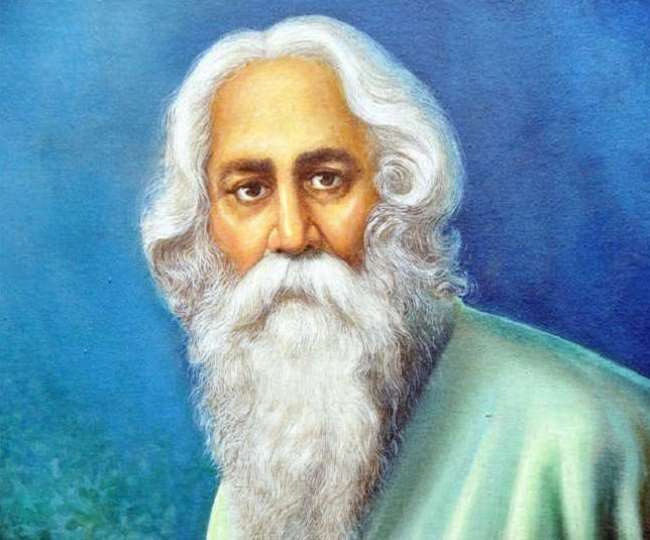First non-European to win a Nobel Prize in literature: Who is Rabindranath Tagore?
Tagore grew up in a culturally rich family of mathematicians, musicians, journalists, writers, and artists. The fact that he was brought up in such an environment laid a solid foundation for his future educational philosophy.

Rabindranath Tagore, one of the greatest names in the Bengali language, India, and contemporary World Literature, was born on May 7, 1861, in Kolkata.
Tagore's name is the Anglicized form of the Bengali word Thakur, which means noble, lord. Tagore had a large, wealthy, and educated family and fourteen siblings. Tagore grew up in a culturally rich family of mathematicians, musicians, journalists, writers, and artists. The fact that he was brought up in such an environment laid a solid foundation for his future educational philosophy.
Rabindranath Tagore (7 May 1861 – 7 August 1941) was a Bengali polymath who worked as a poet, writer, playwright, composer, philosopher, social reformer, and painter. He reshaped Bengali literature and music as well as Indian art with Contextual Modernism in the late 19th and early 20th centuries. Author of the "profoundly sensitive, fresh and beautiful" poetry of Gitanjali, he became 1913 the first non-European and the first lyricist to win the Nobel Prize in Literature.
At the age of 8, he started taking poetry lessons. He wrote his first work at the age of 16 (Kavi Kahini - The Story of a Poet). After completing his secondary education by taking lessons from private teachers, he was sent by his family to London at the age of 17 to study law. His family wanted Tagore to become a lawyer, and after a while, he abandoned his legal education, which seemed meaningless to him. When he returned to India, he began to write, although he took over the management of the family property from his father. In 1881, at the age of 20, he published Letters of a European Traveler.
English poets William Wordsworth, Percy Bysshe Shelley, and Robert Browning had a significant impact on Tagore's poetry. Tagore was very fond of nature. Being influenced by William Wordsworth, his interest in nature increased and he began to express himself in his lines. Bengali Raja Ram Mohan Roy, the founder of a new religion called Brahmo Samaj in India, was one of the people who matured Tagore's world of thought.
Tagore's youth coincided with a time in Bengal under the influence of the European spirit. This situation made a great impact on Tagore's soul and he wrote his novel Yurt ve Dünya. After returning from England, he spent all day in the gardens writing his poems, which were sung in the language of the nature that surrounded him. He usually lived in seclusion in his father's house or accompanied his brother, who was a judge. In his stories and novels, Tagore expresses the characteristics of the Bengali people in his own unique style, using romanticism as well as realism.

Tagore marries Mrinalini Devi Raichaudhuri at the age of 23. He produced some dramatic works over the years. From the age of twenty-five to thirty-five, the poet brings to life the most beautiful love poems and children's songs written in Bengali. Tagore had five children, three of whom were daughters, from this marriage. Tagore founded a school in 1901, first for his own children and the children of a few friends. He was against teaching only through books at school, staying within four walls, and receiving education. He was in favor of merging with nature. Tagore lost his beloved wife and then two children during the years when he started school. After these painful events, he went into complete seclusion.
Tagore went back to England in 1912 in the face of the pain he experienced after losing his children.
During this long journey, he edited his poems written in English and translated them from Bengali to English. This is how Gitanjali appeared. Gitanjali is one of Tagore's works that made him famous in the world. After this work, Tagore was awarded the Nobel Prize for Literature in 1913.
Then he went on a big trip. He traveled around to get to know the Far East countries, Japan, and the peoples of the North and South USA better. His famous speech denouncing the war and nationalism in Japan on June 18, 1916, became a turning point in world history. As a result of his travels to the West, he was given the title of Sir by England in 1915, especially because of his first religious and philosophical speech, Sadhana, in the speeches he gave at universities in England. However, he returned the title of Sir in order to support Gandhi, who struggled to ensure India's independence. While returning this title, Tagore wrote to the governor-general, Lord Chelmsford, on May 31, 1919. He expresses the situation of the people, and the injustice that was done to his citizens and says that he has returned the title.
Although he has had no painting education since the 1930s, he mostly concentrates on the art of painting. During these years, he also publishes poetry and song compilations, some of which are his own. He has about 2,000 paintings, most of which include fantastic fairy tale creatures, made until 1940. Tagore develops a vocal musical style in Indian music patterns known as Rabindra Sangeet. His song, You Are the sole ruler of all people's Souls, was made the national anthem of India in 1950. “My poems are for the people of my own country. My paintings are my gift to the West.”
He uses all of his Nobel Prize and money prize for the school he opened before. He built a girls' school, an arts and agriculture school next to the primary school, and opened a university called Visva-Bharati in 1921.
Those around him called Tagore the Master, while Gandhi greeted him as the Great Guide. He himself adopted the name Kavih, meaning poet, wise. He died on August 7, 1941, in Kolkata, the city where he was born.
